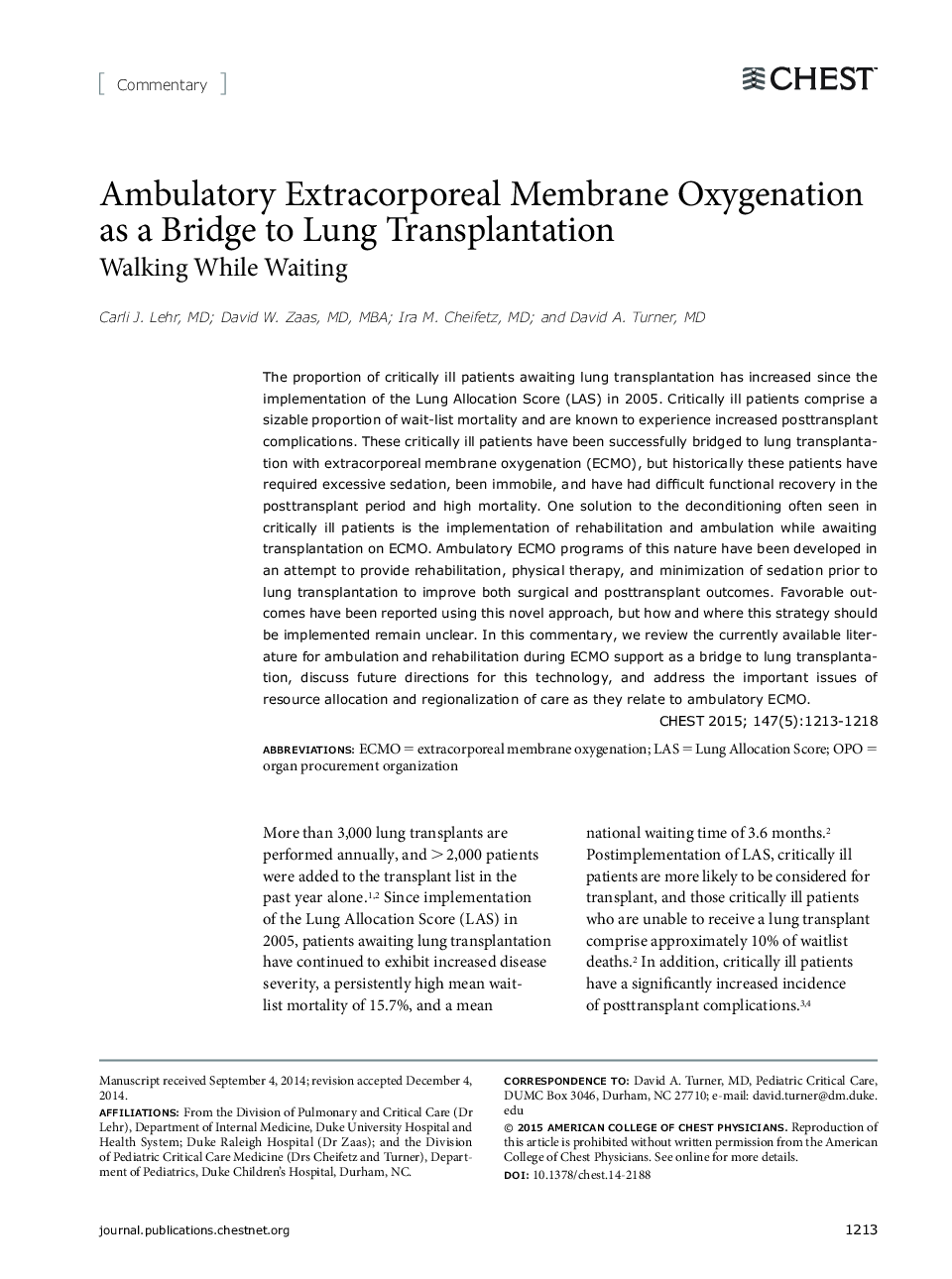| Article ID | Journal | Published Year | Pages | File Type |
|---|---|---|---|---|
| 5953305 | Chest | 2015 | 6 Pages |
Abstract
The proportion of critically ill patients awaiting lung transplantation has increased since the implementation of the Lung Allocation Score (LAS) in 2005. Critically ill patients comprise a sizable proportion of wait-list mortality and are known to experience increased posttransplant complications. These critically ill patients have been successfully bridged to lung transplantation with extracorporeal membrane oxygenation (ECMO), but historically these patients have required excessive sedation, been immobile, and have had difficult functional recovery in the posttransplant period and high mortality. One solution to the deconditioning often seen in critically ill patients is the implementation of rehabilitation and ambulation while awaiting transplantation on ECMO. Ambulatory ECMO programs of this nature have been developed in an attempt to provide rehabilitation, physical therapy, and minimization of sedation prior to lung transplantation to improve both surgical and posttransplant outcomes. Favorable outcomes have been reported using this novel approach, but how and where this strategy should be implemented remain unclear. In this commentary, we review the currently available literature for ambulation and rehabilitation during ECMO support as a bridge to lung transplantation, discuss future directions for this technology, and address the important issues of resource allocation and regionalization of care as they relate to ambulatory ECMO.
Keywords
Related Topics
Health Sciences
Medicine and Dentistry
Cardiology and Cardiovascular Medicine
Authors
Carli J. MD, David W. MD, MBA, Ira M. MD, David A. MD,
